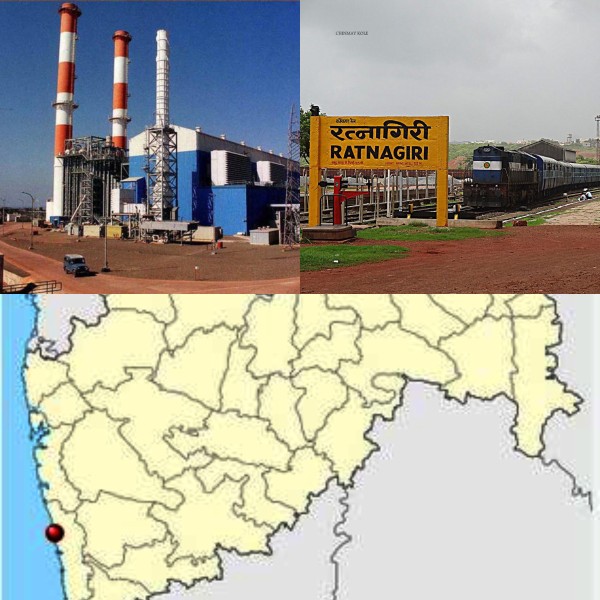- Location: Dabhol Power Station which is located in Ratnagiri district in Maharashtra, India.
- Power Plant Built by: Dabhol Power Company (DPC)
- DPC made by Joint Venture of: Enron, General Electric, Bechtel and Maharashtra Power Department Corporation.

- Year: 1992
- Importance: Was the biggest foreign investment in India.
What's the issue: The plant was stuck/entangled in Controversies of corruption and malpractices involving Enron and people at the highest political levels both of India and the United States(Clinton and Bush Administration) Government.

The Story of the project starts around 1992 when Indian expert went to the United States to find an energy shortage problem. During December, 1993, Enron finalized a 20 year power purchase contract with the Maharashtra State Electricity Board. It is said that to get this project Enron had paid Clinton Administration $100 billion as a bribe.
Construction Plan of Dabhol Power Station was planned to be completed in two phases. he first phase was a 740 MW unit to use naphtha as the fuel. Construction started in 1992 and finally completed in May 1999. The next phase was 1700 MW of units using liquefied natural gas (LNG) as fuel. At its height, the construction of the Dabhol power station employed 15,000 people.
But, Enron in India had been an economic disaster and a human rights nightmare. From the beginning, the project was in controversy.
Things due to which this project got into trouble were:
- The project didn't have a transparent bidding process for their contracts.
- Enron didn't consider the impact of the project on the local community and actual consumers of the power they supply.
- The possible repercussions of the high cost of power compared to other projects were not considered by Enron.
- The MoU was drafted only one-sided, favouring DPC on most occasions.
- No Environmental Impact Assessment was carried out.
- Use of LPG as compared to cheaper alternative indigenous fuels greatly increased the cost of the energy supplied to MSEB.
- A lot of responsibility and risk was on MSEB and GoM, in such a scenario it was only fair that Enron gave MSEB an equity stake in their project with they failed to do in the first agreement.
All this actually end up causing hindrance for Dabhol down the line.
Enron worked hand in hand with corrupt Indian politicians and bureaucrats in rushing the project through. Charges filed by an Indian public interest group allege Enron and the Indian company Reliance bribed the Indian petroleum minister in 1992-93 to secure the contract to produce and sell oil and gas from the nearby Panna and Mukta fields to supply the plant.
A Human Rights Watch report recounted incidents of farmers' land stolen, water sources damaged, officials bribed and opponents of the project arrested on trumped-up charges. In 1997, the state police attacked a fishing village where many residents opposed the plant. The pregnant wife of one protest leader was dragged naked from her home and beaten with batons.
The state forces accused of abuses provided security to the Dabhol Power Corporation (DPC), a joint venture of Enron, the Bechtel Corp. and General Electric, overseen by Enron.
The U.S. State Department issued the DPC a human rights clean bill of health. Charged with the assessment was U.S. Ambassador Frank Wisner, who had also helped Enron get a contract to manage a power plant in Subic Bay in the Philippines in 1993. Shortly after leaving his post in India in 1997, Wisner took up an appointment to the board of directors of Enron Oil and Gas, a subsidiary of Enron.
Thanks in part to Wisner's positive rights review, Washington extended some $300 million in loan guarantees to Enron for its investment in Dabhol - even though the World Bank had refused to finance the project, calling it unviable.
A recent Indian investigative committee report exposed an 'utter failure of governance' - bribery, lack of competitive bidding, secrecy, etc. - by both the Indian federal government and two successive state governments as they rushed the Enron project through.
By June 2001, the Maharashtra state government had already broken off its agreement with DPC because its power cost too much. That was the plant's one and only customer.
By December, news of Enron's collapse was in newspapers across the world. Dabhol project was said to be one of the reasons for the collapse. But the company still filed a $200 million claim with the U.S. government's Overseas Private Investment Corporation, a U.S. taxpayer-funded insurance fund for American companies abroad, in an attempt to recoup losses from the DPC. Indian newspapers reported that Vice President Dick Cheney, Treasury Secretary Paul O'Neil and Commerce Secretary Don Evans tried to twist the Indian government's arm into coughing up the money. Otherwise, U.S. officials warned, other investment projects would be jeopardized. International media reported last month that U.S. government documents showed Cheney tried to help collect the debt.
Today in Dabhol, the power plant is considered polluting and undependable. Springwater has become undrinkable, the mango crop is blighted and the fish catch is dwindling. Often at nightfall, the electricity fails.
How did Enron manage to push the project through? By using a time-tested strategy. Centuries ago, the East India Company went to India to trade and stayed on to rule. Before long, Indian money and goods were feeding coffers in London, and the products were sold back to the colony. The DPC was in India, but the money went to Enron's offshore tax shelters. And just like the East India Company, Enron appeared to apply a strategy of divide and conquer. It offered groups of villagers money, hospitals and lucrative labour contracts, with the result that families sometimes became divided against each other.
Friends when someone says that Indians are corrupt people then think twice because corruption is taught by the west and came from the west. There is research done by Princeton University that whether the USA Government represents the people?
Look at the video & one might find that the even the USA is corrupt.







 CAclubindia
CAclubindia

